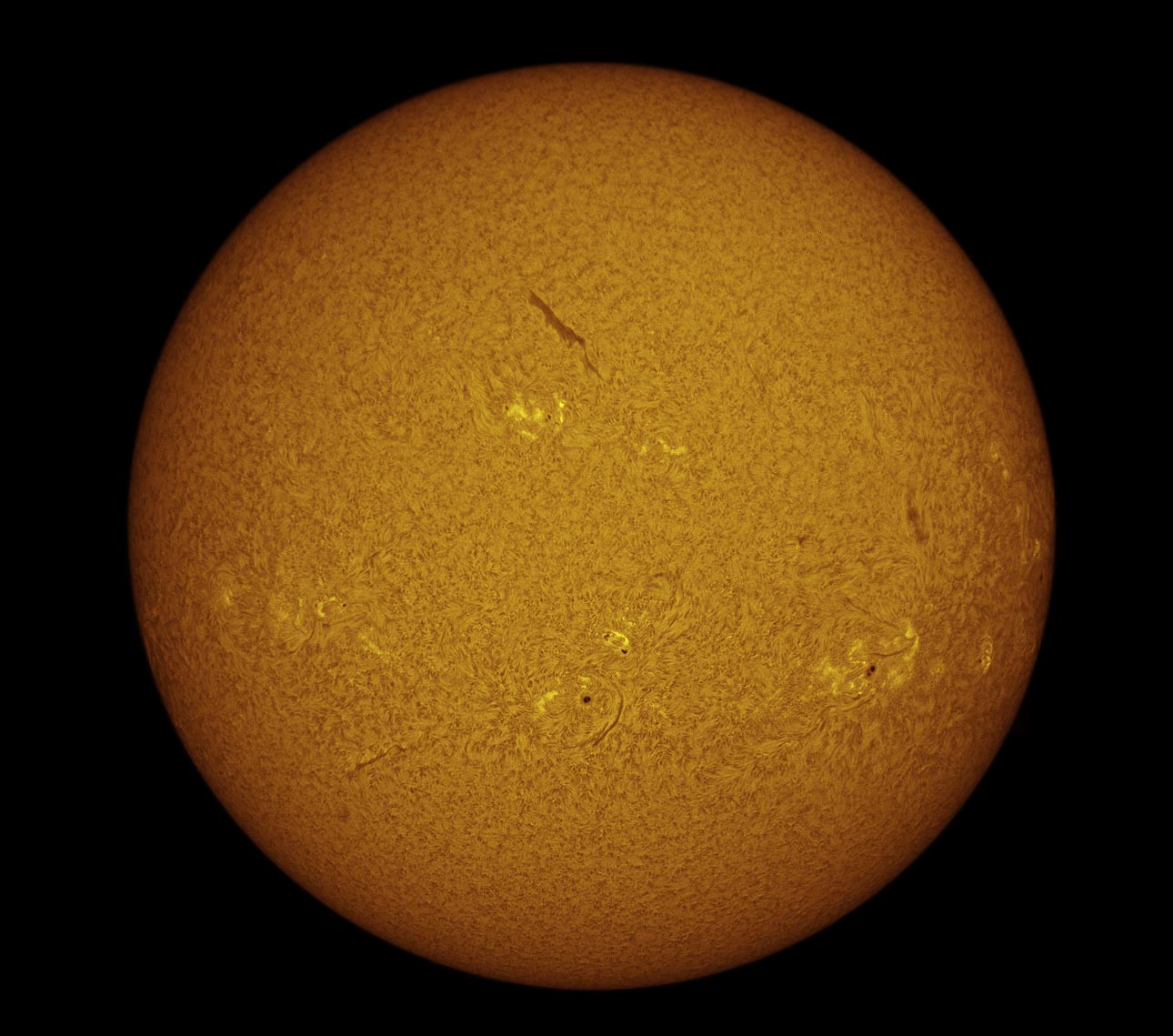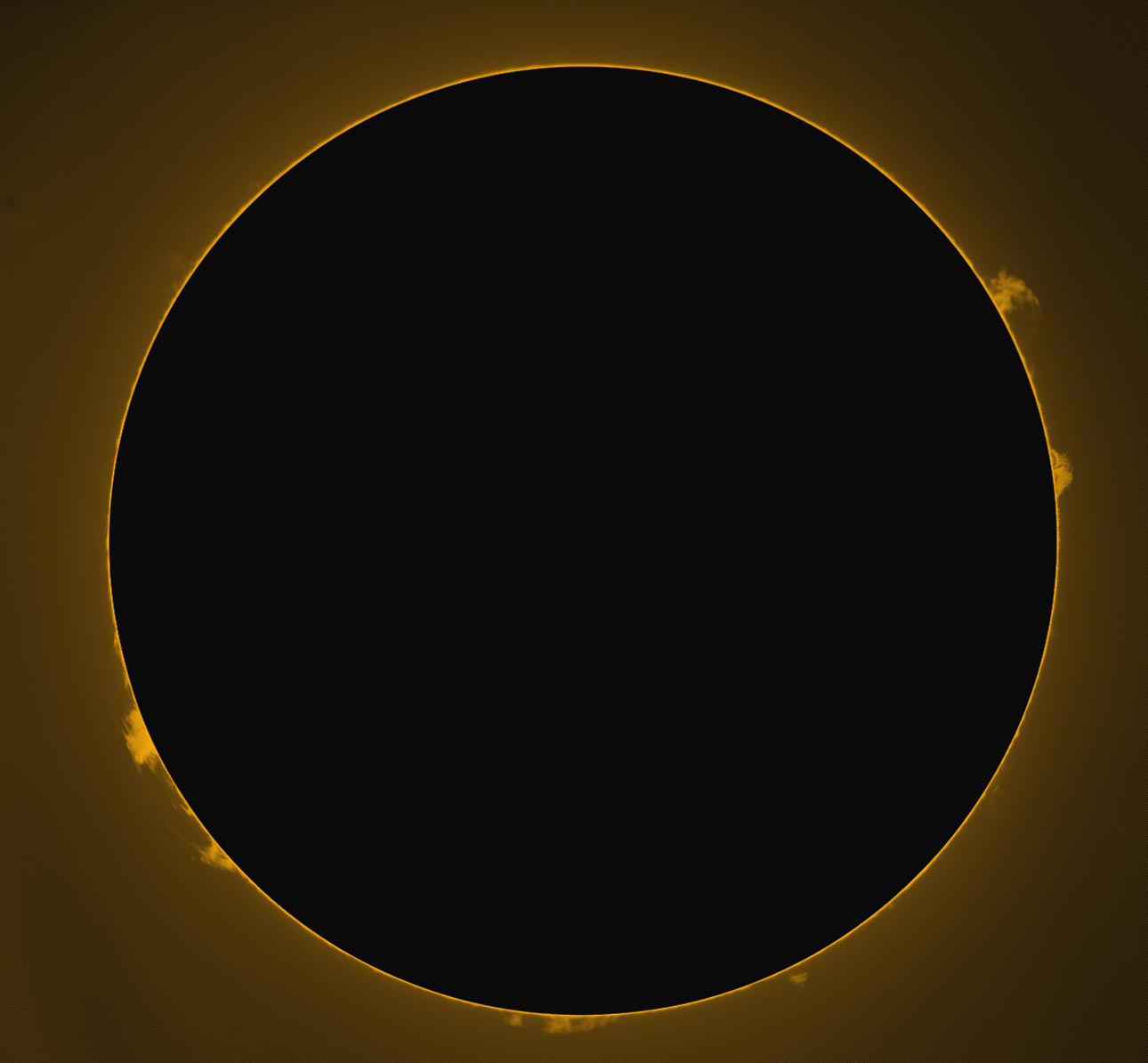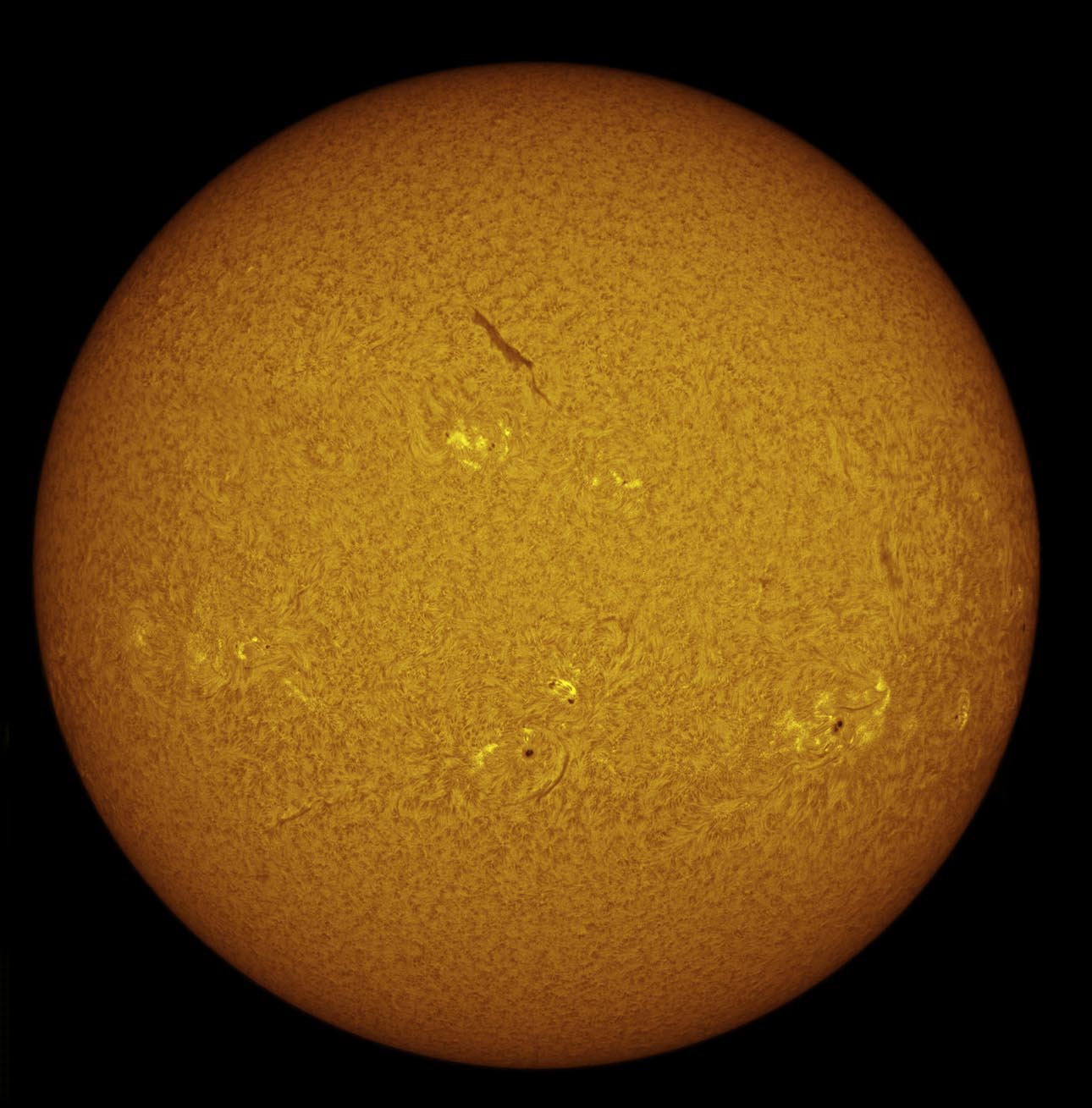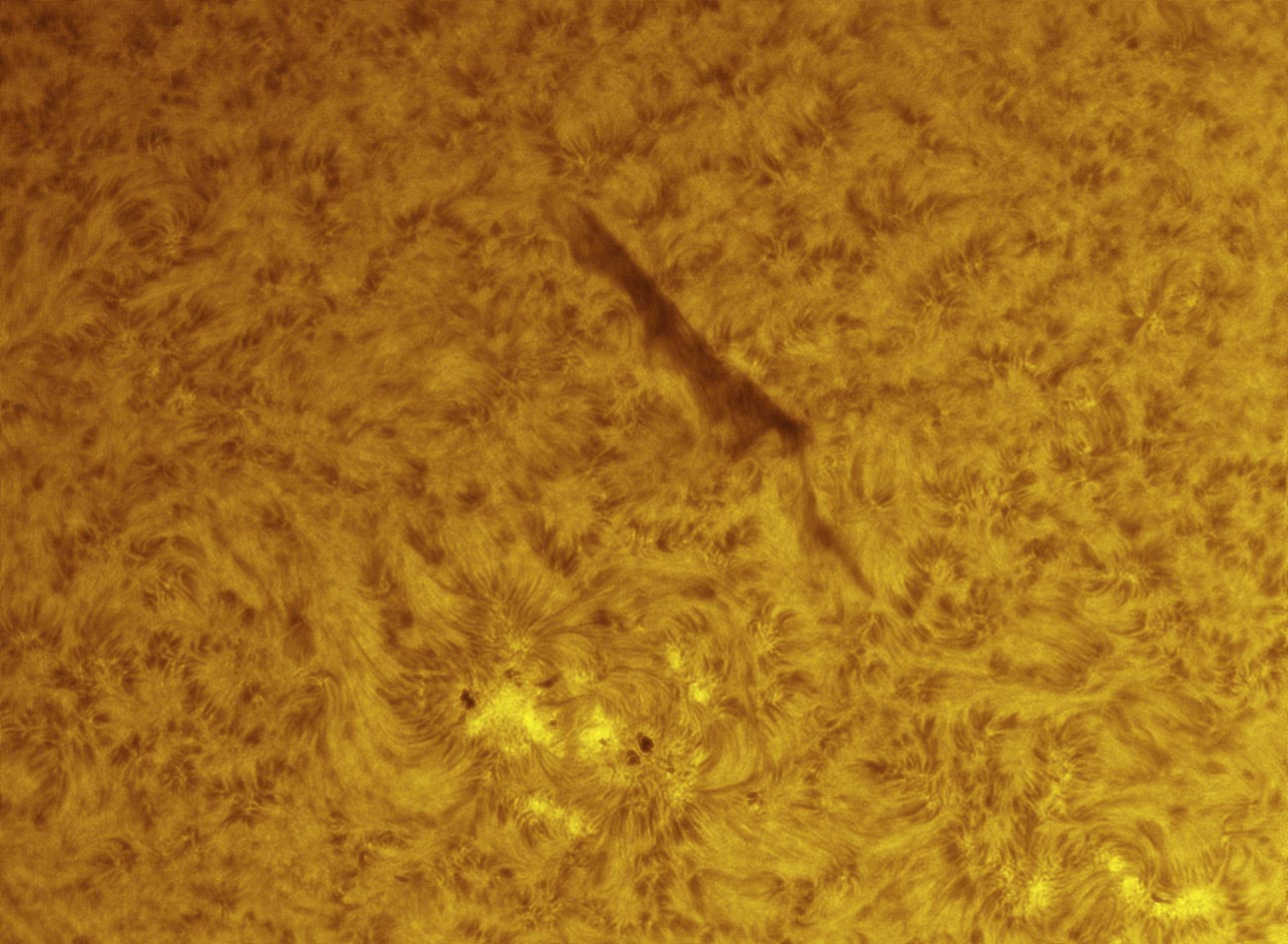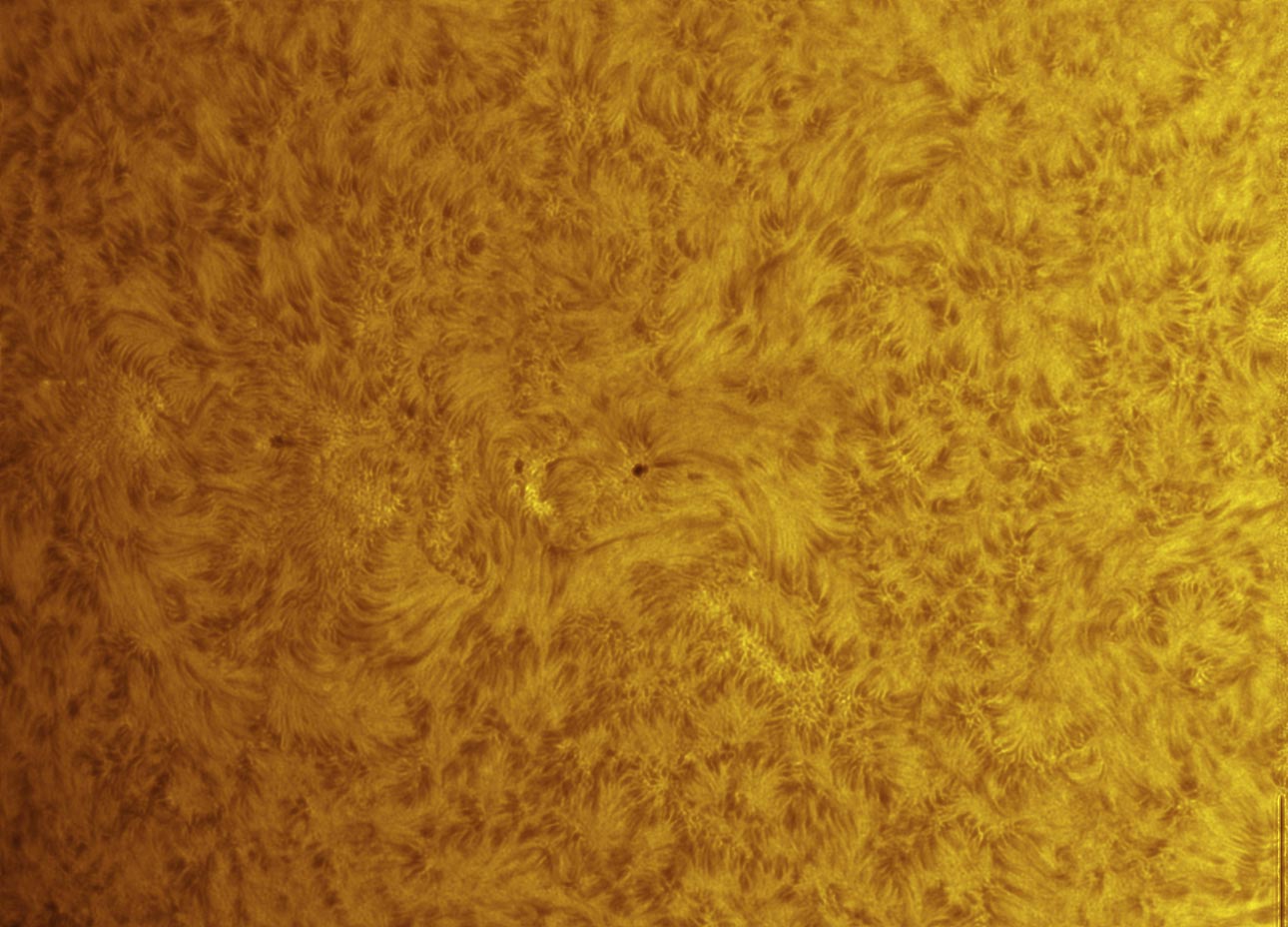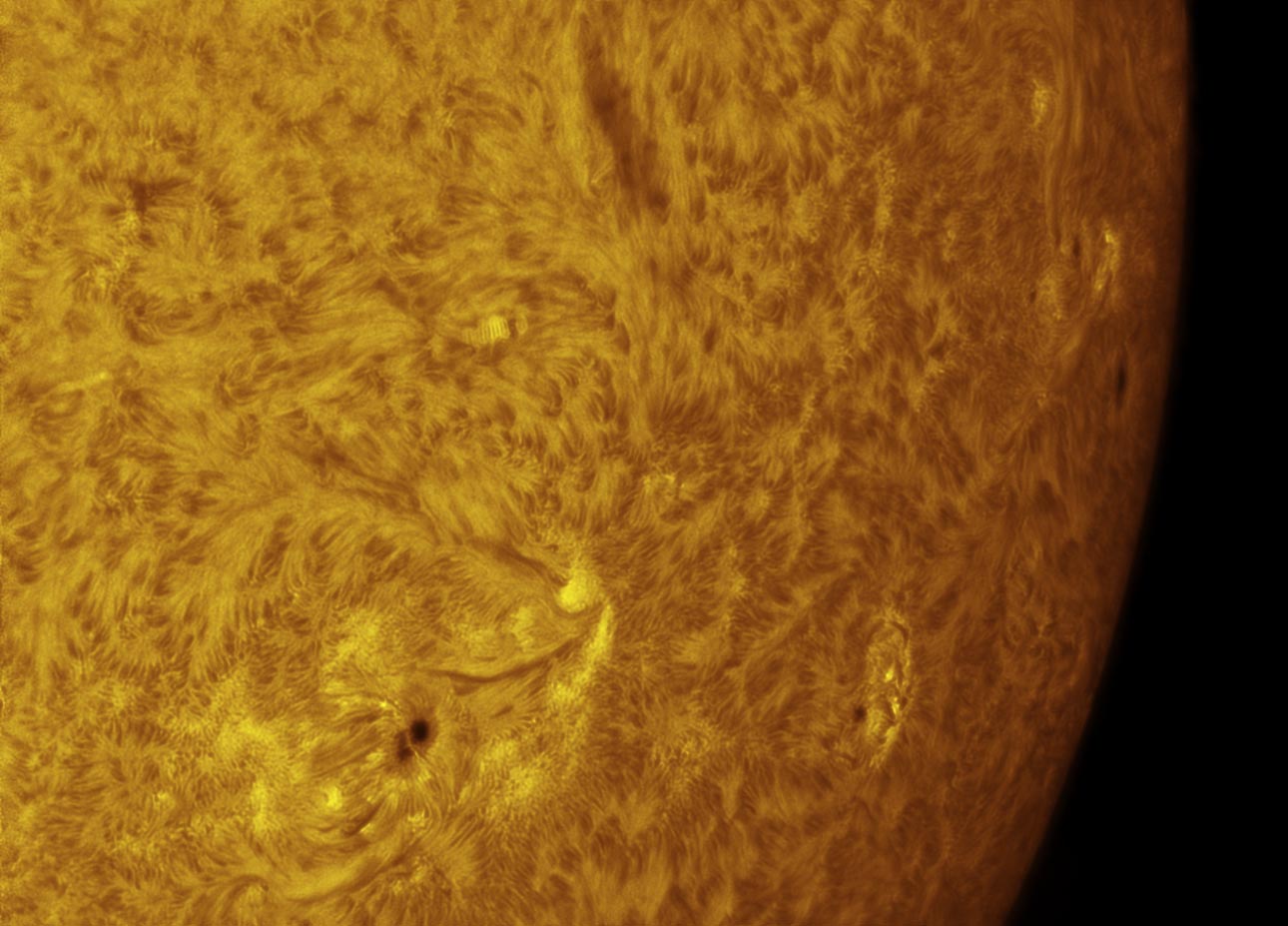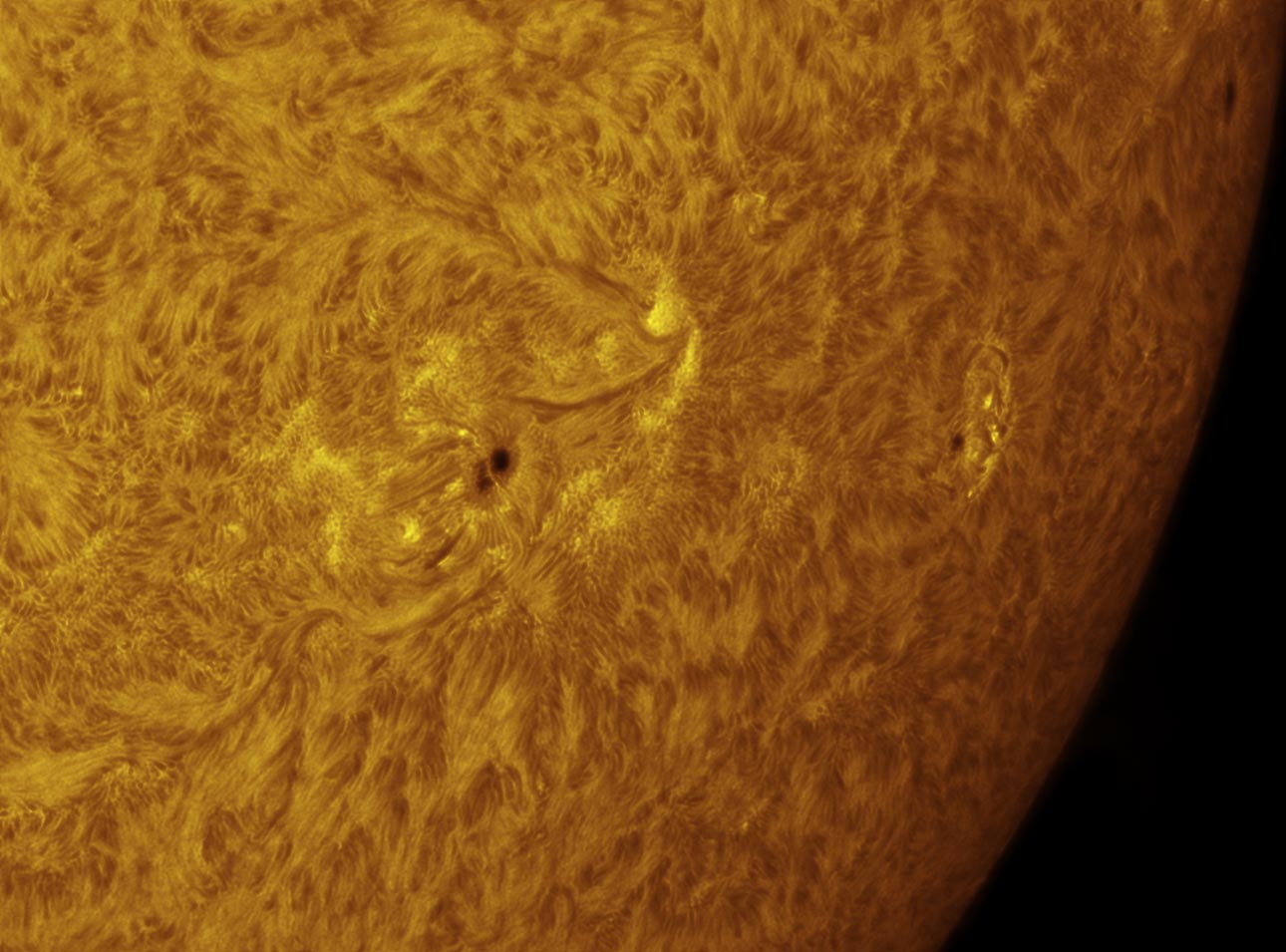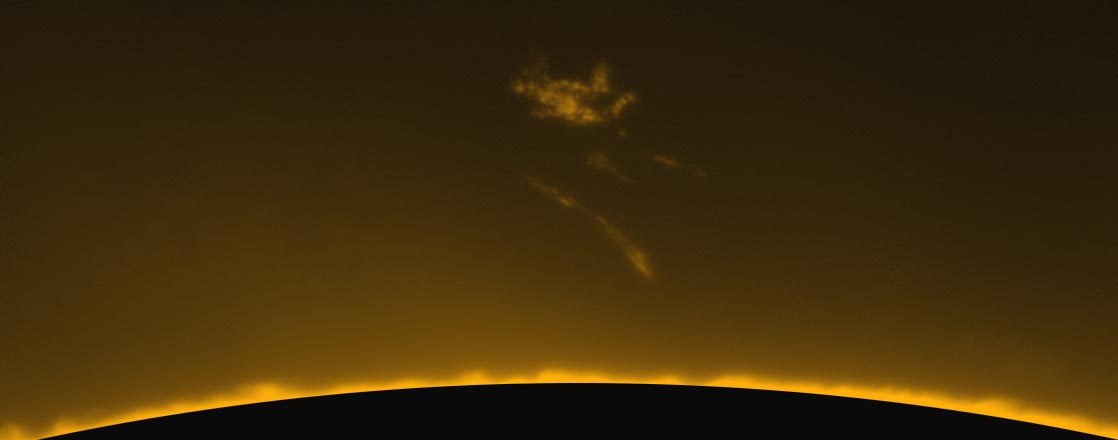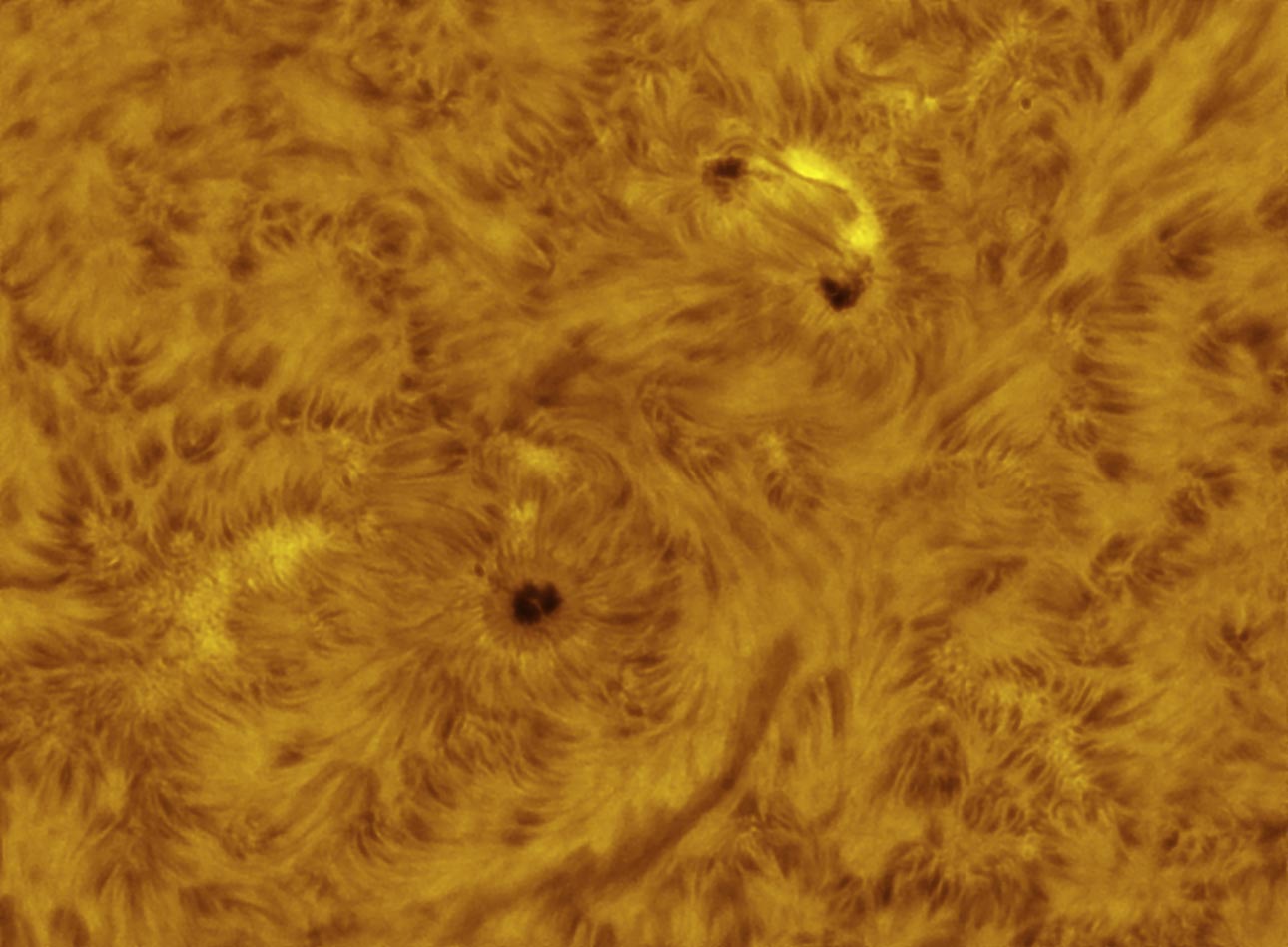Sun in HAlpha With Lunt LS100THa Uploaded 5/17/14 Daily Report For Saturday, May 17th, 2014
Images below are 800 wide and non clickable
Only two to three times per year does the seeing get as good as 3/5 here in Payson. For the lucky few of you that live in places where fine seeing is the norm, I envy you! For us, at the bottom of a 2000 foot escarpment known as the Colorado Plateau, our mountainous terrain prohibits such quality on a frequent basis. Today however, the sky was clear at sunrise, and seeing was steady as it has been for over six months. I trusted my Lunt LS100 hydrogen alpha instrument to this task. Below are some of the images taken this morning, about 2h after sunup and lasting only an hour or so.
Full disk with the Antares .5x focal reducer and DMK51 camera:
Lets now show you this same full disk, but with the disk blocked out so you can see the dim prominences around the edges.
Now if I take the focal reducer out, and take two prime focus shots which cover half the disk and piece them together, you get this higher resolution image:
Next set is with the Klee 3x barlow and are high resolution close ups of the disks features:
and along the limb of the Sun, we zoom in for the very fine details in the prominences:
Finally, here is an attempt at one active region on the disk with the 5x televue powermate. A bit too much magnification?
Thats it for today, another adventure in shooting our star the Sun.
Instruments: Lunt LS100THa Halpha Platform: Astrophysics 1200 Camera: DMK 51 (1600 x 1200) Location: Payson, Arizona Elevation: 5150 ft. Sky: Seeing 6/10, Transparency 6/10 Outside Temperature: 45F Processing: Registax 6, Photoshop CS2 Solar Home Page HOME SCHMIDT GALAXIES EMISSION NEBS REFLECTION NEBS COMETS GLOBULARS OPEN CLUST PLANETARIES LINKS
